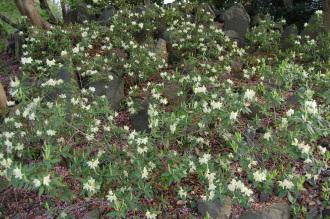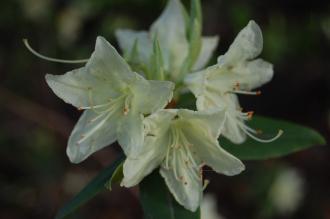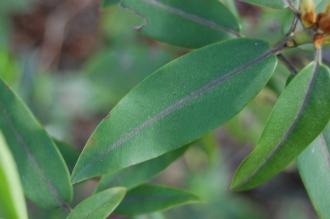
Rhododendron keiskei Flower (18/04/2015, Imperial Palace East Garden, Tokyo, Japan)
Position: Full sun to partial shade
Flowering period: Spring
Soil: Moist, well drained, acidic
Eventual Height: 3m
Eventual Spread: 3m
Hardiness: 5b, 6a, 6b, 7a, 7b, 8a, 8b, 9a
Family: Ericaceae
Rhododendron keiskei is an evergreen shrub with an open habit. Its dark green leaves are elliptic with entire margins, up to 7cm long. Its pale yellows flowers are funnel shaped with wavy edges, up to 3cm across. Its fruit is capsule like.

Rhododendron keiskei Flower (18/04/2015, Imperial Palace East Garden, Tokyo, Japan)
Rhododendron keiskei, commonly known as Rhododendron, is native to Japan. In its native habitat it grows in rocky mountainous regions.
The etymological root of the binomial name Rhododendron is derived from the Greek rodon ‘a rose’ and dendron ‘a tree’. Keiskei is named after Keisuke Ito (1803 – 1901), a Japanese botanist.
The landscape architect may find Rhododendron keiskei useful as an evergreen shrub with attractive spring flowers suitable for acid, rocky soils.

Rhododendron keiskei Leaf (18/04/2015, Imperial Palace East Garden, Tokyo, Japan)
Ecologically, Rhododendron keiskei flowers are attractive to pollinating insects. Its flowers produce a toxic nectar which, when collected by bees, produce a poisonious honey.
The Royal Horticultural Society has given the variety Rhododendron keiskei var. ozawae ‘Yaku Fairy’ their prestigious Award of Garden Merit in 1993.
Rhododendron keiskei prefers moist, humus rich, well-drained soils. It prefers an acid to neutral pH of soil.
Rhododendron keiskei requires little maintenance. Pruning should be carried out after flowering but before the new buds form.

Landscape Architecture

